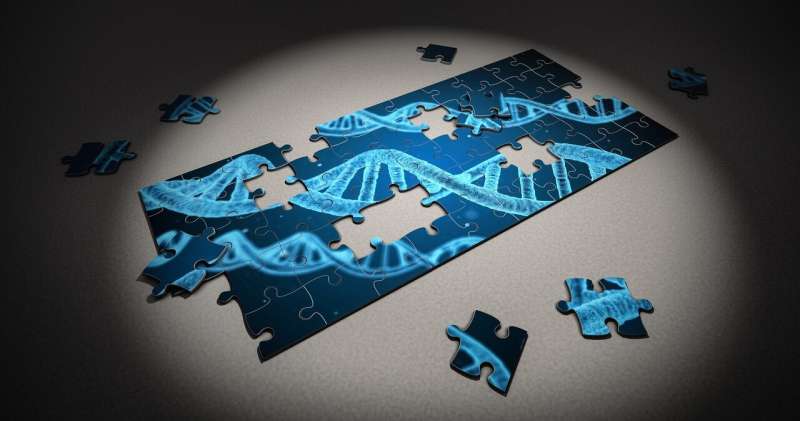Rare genetic syndrome identified, caused by mutations in gene SATB1


Advances in DNA sequencing have uncovered a rare syndrome which is caused by variations in the gene SATB1.
The study, co-authored by academics from Oxford Brookes University (UK), University of Lausanne (Switzerland), Radboud University (The Netherlands), University of Oxford (UK), University of Manchester (UK) and led by Max Planck Institute for Psycholinguistics (The Netherlands), discovered three classes of mutations within the gene SATB1, resulting in three variations of a neurodevelopmental disorder with varying symptoms ranging from epilepsy to muscle tone abnormalities.
Recognition of disorder will increase understanding and diagnosis
An international team of geneticists and clinicians from 12 countries identified 42 patients with mutations in the gene SATB1 who were all displaying a range of similar symptoms, albeit of varying severity.
Variations, or mutations, of SATB1 were found to have different effects in the cell. For example, some variations led to increased activity of the protein which causes a more severe type of disorder, while other variations cause loss of function of the gene and lead to less severe difficulties.
The SATB1-syndrome is characterised by neurodevelopmental delay, intellectual disability, muscle tone abnormalities, epilepsy, behavioural problems, facial dysmorphism and dental abnormalities.
Dr. Dianne Newbury, Senior Lecturer in Medical Genetics and Genomics at Oxford Brookes University said: “Previously, just one or two cases of patients with SATB1 variations had been described but it was not recognised as a specific syndrome. Patients displaying these characteristics and their families, will have known that they had an undefined neurological condition, but they wouldn’t have known any specific detail about the condition, or why they had it.
“We hope that the recognition of this new disorder, and the information about the molecular pathways contributing to it, will help the families and individuals affected understand more about the condition and achieve a diagnosis they would not have had previously.”
Three classes of mutation have different effects in the cell
The mutations found in the genome of the patients were found to belong to three different classes. The first mutation class, identified in eight patients, caused a loss of function of the SATB1 gene and halved the production of the encoded protein. This leads to a less severe syndrome characterised by diminished cognitive function, visual problems and facial dysmorphism.
The second class contains four mutations, which encode shorter proteins that are less efficient as they are not positioned correctly in the cell. This second mutation shows as an intermediary syndrome, characterised as more severe than the first, but less severe than the third.
The third class of variation encompasses the mutations found in the last thirty patients. These modify the encoded protein, making it more active. This altered protein is ‘sticky’ and binds better to DNA, diminishing the expression of genes it regulates and causing a more severe type of disorder, characterised by severe intellectual disability, epilepsy, a motor speech disorder (dysarthria) and specific facial features.
Understanding mutations is key to discovering the origin of genetic diseases
Dr. Alexandre Reymond, Director of the Center for Integrative Genomics at the University of Lausanne in Switzerland said: “These results demonstrate that each mutation is different and that is essential to understand their mode of action in order to explain the origin of genetic diseases.
“We must go beyond sequencing, which is only a first step.”
Source: Read Full Article